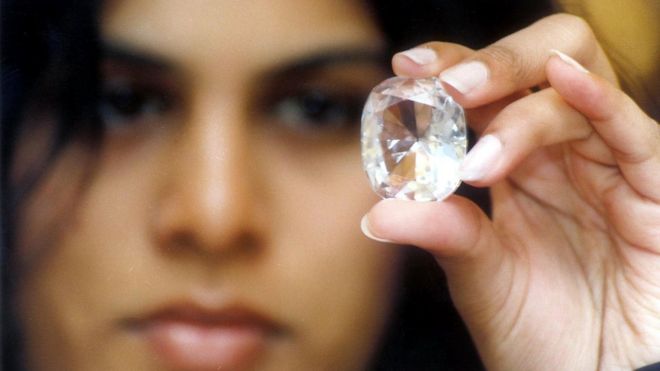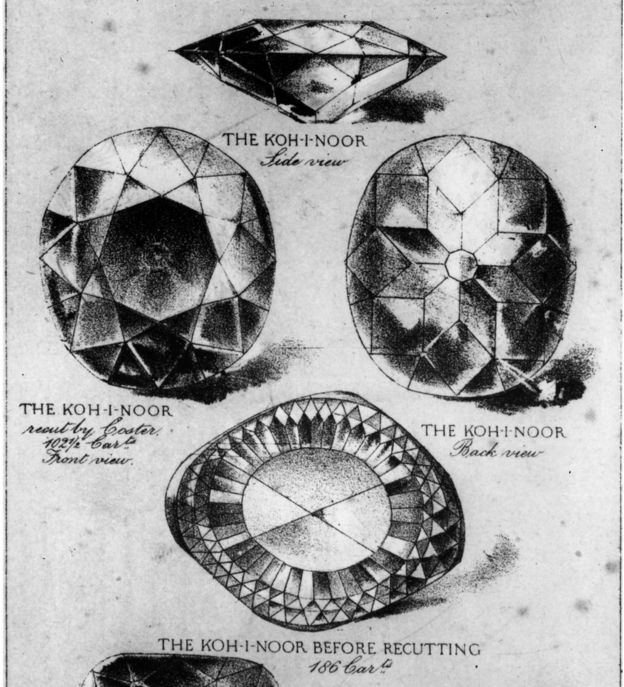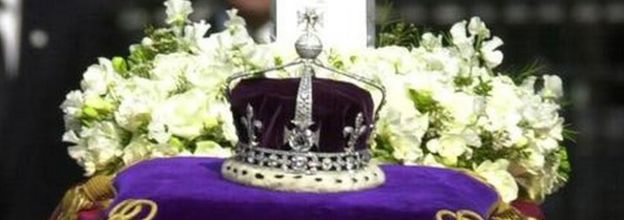
The Indian government says it is still seeking to reclaim the priceless Koh-i-noor diamond from Britain, despite the Supreme Court being told otherwise.
The gem came into British hands in the 19th Century and is part of the Crown Jewels on show at the Tower of London.
Ownership of the famous gem is an emotional issue for many Indians, who believe it was stolen by the British.
On Monday, India's solicitor-general had told the court it was "neither stolen nor forcibly taken".
Ranjit Kumar, who was representing India's government in the hearing, had said the 105-carat diamond had been "gifted" to the East India company by the former rulers of Punjab in 1849.
But a statement by India's ministry of culture on Tuesday said the government "further reiterates its resolve to make all possible efforts to bring back the Koh-i-noor diamond in an amicable manner".
Mr Kumar's comments, which elicited surprise in India, did not represent the views of the government, the statement said. The official submission to the court has yet to be made, it added.
 Getty Images
Getty Images
The case is being heard by the Supreme Court after an Indian NGO filed a petition asking the court to direct the Indian government to bring back the diamond.
The court is still considering the issue, and said it did not want to dismiss the petition as it could "stand in the way" of future attempts to bring back items that once belonged to India.
Tushar Gandhi, the great-grandson of independence leader Mahatma Gandhi, said in 2009 that it should be returned as "atonement for the colonial past".
However, successive British prime ministers have refused to do so. Most recently, David Cameron said that returning it would set an "unworkable precedent".
"If you say yes to one, you suddenly find the British Museum would be empty," he told Indian media during a trip to the country in 2010.
The diamond was last worn by the late Queen Mother and was displayed on her crown when her coffin lay in state after her death in 2002.
Diamond's long and bloody history
 PA
PA
The Koh-i-Noor, meaning "Mountain of Light" in Persian, is the most famousdiamond in the Crown Jewels. It has been the subject of conquest and intrigue for centuries, passing through the hands of Mughal princes, Iranian warriors, Afghan rulers and Punjabi Maharajas.
Attempting to sum up its worth, the 18th Century Afghan queen Wufa Begum said: "If a strong man were to throw four stones, one north, one south, one east, one west, and a fifth stone up into the air, and if the space between them were to be filled with gold, all would not equal the value of the Koh-i-Noor."
The stone was originally found in India's Golconda mines and measured 186 carats when it was eventually handed to the British in 1849 under the terms of a punitive treaty following the Anglo-Sikh war. It was signed by the 10-year-old Sikh ruler after his mother was thrown in jail.
However, the diamond's traditional rose cut did not impress visitors to the Great Exhibition in 1851 and so it was re-cut as an oval brilliant, gaining sparkle but losing about 40% of its weight in the process. The 105.6 carat stone - the size of a hen's egg - is currently set in the Crown of Queen Elizabeth the Queen Mother.
It is said to be unlucky for men to wear the Koh-i-Noor diamond owing to its long and bloody history. Some Indian and Pakistani visitors to the Tower of London hiss as they pass it - they want it returned to the Indian subcontinent, though to which country remains unclear.
No comments:
Post a Comment